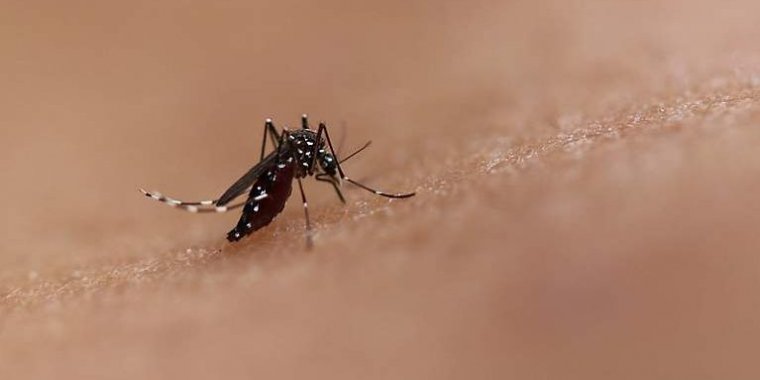| News / Science News |
Study of mosquito protein could lead to treatments against life-threatening viruses
The mosquito protein AEG12 strongly inhibits the family of viruses that cause yellow fever, dengue, West Nile, and Zika and weakly inhibits coronaviruses, according to scientists at the National Institutes of Health (NIH) and their collaborators.

Bite by an Aedes mosquito. This species can transmit diseases such as chikungunya, dengue, and Zika. Photo: NIAID
The researchers found that AEG12 works by destabilizing the viral envelope, breaking its protective covering. Although the protein does not affect viruses that do not have an envelope, such as those that cause pink eye and bladder infections, the findings could lead to therapeutics against viruses that affect millions of people around the world.
Scientists at the National Institute of Environmental Health Sciences (NIEHS), part of NIH, used X-ray crystallography to solve the structure of AEG12. Senior author Geoffrey Mueller, Ph.D., head of the NIEHS Nuclear Magnetic Resonance Group, said at the molecular level, AEG12 rips out the lipids, or the fat-like portions of the membrane that hold the virus together.
"It is as if AEG12 is hungry for the lipids that are in the virus membrane, so it gets rid of some of the lipids it has and exchanges them for the ones it really prefers," Mueller said. "The protein has high affinity for viral lipids and steals them from the virus."
As a result, Mueller says the AEG12 protein has great killing power over some viruses. While the researchers demonstrated that AEG12 was most effective against flaviviruses, the family of viruses to which Zika, West Nile, and others belong, it is possible AEG12 could be effective against SARS-CoV-2, the coronavirus that causes COVID-19.
But, Mueller said it will take years of bioengineering to make AEG12 a viable therapy for COVID-19. Part of the problem is AEG12 also breaks opens red blood cells, so researchers will have to identify compounds that will make the protein target viruses only.
Alexander Foo, Ph.D., an NIEHS visiting fellow and lead author of the paper, explained that mosquitoes produce AEG12 when they take a blood meal or become infected with flaviviruses. Like humans, mosquitoes mount a vigorous immune response against these viruses, with AEG12 bursting their viral covering.
But, at the beginning of the project, Foo and his colleagues knew little about the function of AEG12. (National Institutes of Health)
YOU MAY ALSO LIKE





